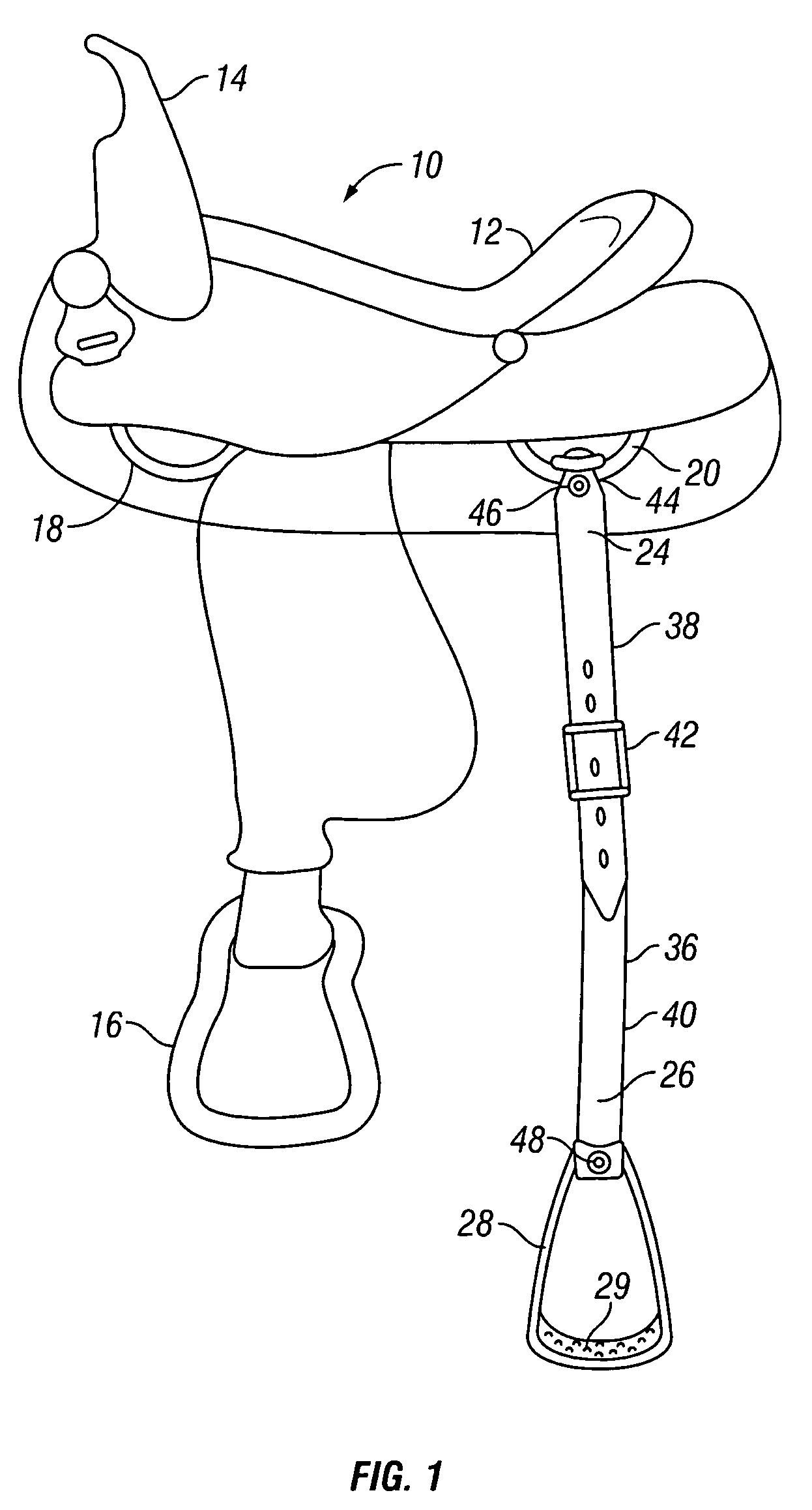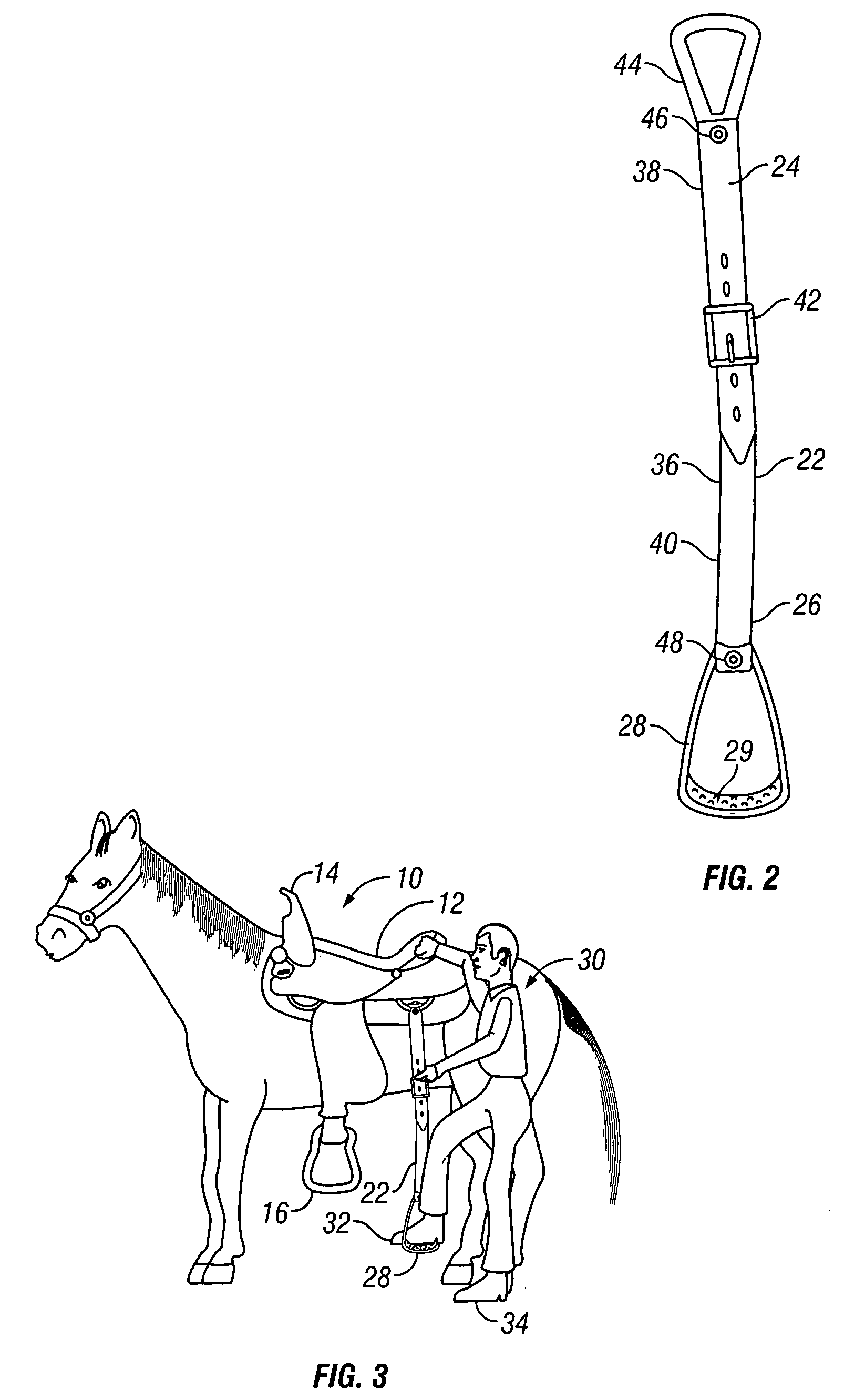Auxiliary stirrup for saddle
a technology of stirrup and saddle, which is applied in the direction of saddles, fastening devices, animal husbandry, etc., can solve the problems of difficult mounting of horses, horse running or rearing up, and ladders that cannot be taken along for later use, etc., and achieve the effect of simplifying the mounting of horses
- Summary
- Abstract
- Description
- Claims
- Application Information
AI Technical Summary
Benefits of technology
Problems solved by technology
Method used
Image
Examples
Embodiment Construction
[0016]FIG. 1 shows a saddle 10 having a seat 12, a horn 14, and a primary stirrup 16. It is understood that the saddle 10 has another primary stirrup on the right side of the saddle that is not shown in the drawings. The saddle 10 also includes a front ring 18 and a rear ring 20.
[0017] The saddle 10 has an auxiliary or secondary stirrup 22 on the left side only of the saddle 10. The auxiliary stirrup 22 includes an upper end 24 and a lower end 26 with a foot loop 28 on the lower end 26. The upper end 24 of the auxiliary stirrup 22 is secured to a rear portion of the saddle 10, as seen in FIGS. 1 and 3, so that the foot loop 28 resides behind and below the primary stirrup 16. Thus, the foot loop 28 provides a shorter step into which a rider 30 can place their right foot 32, as shown in FIG. 3, and then step up and place their left foot 34 into the primary stirrup 16. The rider 30 can then remove their right foot 32 from the foot loop 28 of the auxiliary stirrup 22 and swing their ri...
PUM
 Login to View More
Login to View More Abstract
Description
Claims
Application Information
 Login to View More
Login to View More - R&D
- Intellectual Property
- Life Sciences
- Materials
- Tech Scout
- Unparalleled Data Quality
- Higher Quality Content
- 60% Fewer Hallucinations
Browse by: Latest US Patents, China's latest patents, Technical Efficacy Thesaurus, Application Domain, Technology Topic, Popular Technical Reports.
© 2025 PatSnap. All rights reserved.Legal|Privacy policy|Modern Slavery Act Transparency Statement|Sitemap|About US| Contact US: help@patsnap.com



